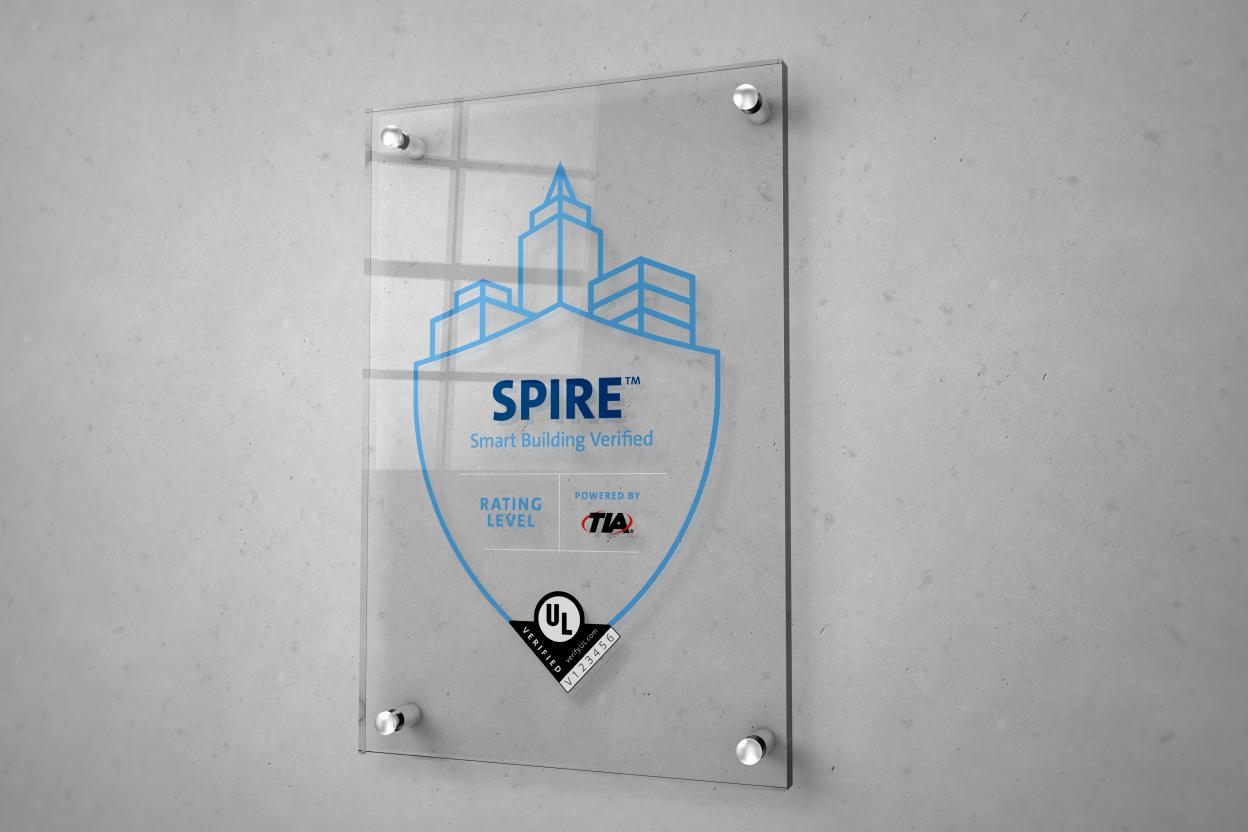7 Steps for Creating a Smart Building
FM provider Service Works Global has released a new white paper that details the seven steps for creating a smart building. The paper dispels the assumption...
Read Full Article
A tool claiming to be the world’s first smart building programme that holistically measures building technology and performance has launched.
Built by the Telecommunications Industry Association (TIA) and UL, a leading global safety science company, the SPIRE Self-Assessment online tool can evaluate building intelligence based on an “expertly curated, objective framework”.
Originally conceived as part of an overall initiative between TIA and UL to share insights to further their work in the smart buildings’ ecosystem, the SPIRE Smart Building Program was developed over the past two years.
“The integration of all building systems is now technically possible and is becoming a necessity for success in a very competitive market.”
–David Stehlin
CEO, TIA
The technology uses six key building elements, intended to optimise asset performance, ROI and tenant relations, according to a news release.
The Self-Assessment tool allows you to see a snapshot of your building performance, providing a quick and easy way to gain valuable building performance insights.
Assessment criteria were developed with the input of a TIA industry working group of more than 60 leading commercial real estate, real estate investment trust (REIT), asset management, technology and telecommunications industry leaders.
In addition to the online Self-Assessment, the SPIRE Smart Building Verified Assessment and Rating will soon be offering full on-site and virtual evaluations of building performance. This review provides the opportunity to receive a verified rating that can be used to promote the confirmed performance and benefits of smart buildings.
“The integration of all building systems is now technically possible and is becoming a necessity for success in a very competitive market,” said David Stehlin, CEO of TIA.
“Fully integrated systems are enabling advanced building automation that helps increase efficiency, optimize operations and enhance overall occupant productivity and wellbeing. By assessing, validating and rating key building elements that take into consideration the entirety of a smart building, SPIRE can simultaneously help improve asset performance, ROI and tenant relations.”
“Corning is proud to be one of the founding members and pilot partners of the SPIRE Smart Building Program,” said Brian Davis, Corning Optical Communications’ Director of Global Market Development for In-Building Networks. Corning is the programme’s first pilot partner, testing the program’s overall assessment approach.
“When we developed our new Optical Communications headquarters building in Charlotte, we used our industry-leading technology to create a facility that can serve as a model for future smart buildings as we help move the industry forward. After completion, TIA and UL helped evaluate and verify that we were meeting or exceeding performance levels in each of the six smart building criteria.”
The SPIRE Smart Building Program comes at a time when businesses are grappling with the extent, complexity and unparalleled reach of COVID-19 and its impact on building assets. A better understanding of operations efficiency, overall costs and risk mitigation of their building portfolios in light of the pandemic has become a top priority of commercial real estate companies, building owners, managers and tenants.
“In these unprecedented times, those overseeing smart building assets are looking for guidance to help better align performance strategies, planning tactics and operational efficiencies,” added Rachna Stegall, Vice President and SPIRE Smart Building Program Lead at UL.
“The SPIRE Smart Building Program does just that by providing insight to smart building technologies and outcomes while helping to empower informed investment decisions about where to focus technology, building enhancements and business optimisations.”
Picture: A photograph of a wall-mounted Smart Building Verified Mark. Image Credit: SPIRE
Article written by Ella Tansley | Published 05 November 2020
FM provider Service Works Global has released a new white paper that details the seven steps for creating a smart building. The paper dispels the assumption...
Read Full ArticleInfogrid has received funding from Original Capital, SoftBank Vision Fund 2, JLL Spark and several others. The smart building technology company has raised $90 million...
Read Full ArticleAhead of the return of their IFM Tour, Infraspeak has laid out their predictions for 2023 smart technology trends for buildings. Watch the...
Read Full ArticleData-driven facilities management is now the expected norm, but security concerns about IoT systems still remain amongst FMs and tenants. The Internet of Things (IoT)...
Read Full ArticleThe operational technology that powers connected devices across building systems is providing more entry points for cyber criminals to exploit, says research and advisory...
Read Full ArticleShumon Choudhury, who has over 15 years of experience managing PRS & FM portfolios, writes about his experiences helping his clients to embrace smart...
Read Full Article800 Fulton Market, a gateway to one of Chicago’s fastest-growing neighbourhoods, has been completed. Watch the...
Read Full ArticleHow will the intersection of retrofits, smart homes and digitally transformed building maintenance help the UK to achieve net-zero emissions by 2050? Nik Flytzanis,...
Read Full ArticleArtificial intelligence is changing medical practice and the healthcare industry. Technologies including machine learning and digitised data acquisition are allowing...
Read Full ArticleAfter almost two years of stops and starts due to the pandemic, enduring resilience is defining the built environment – that’s according to Gensler’s...
Read Full Article